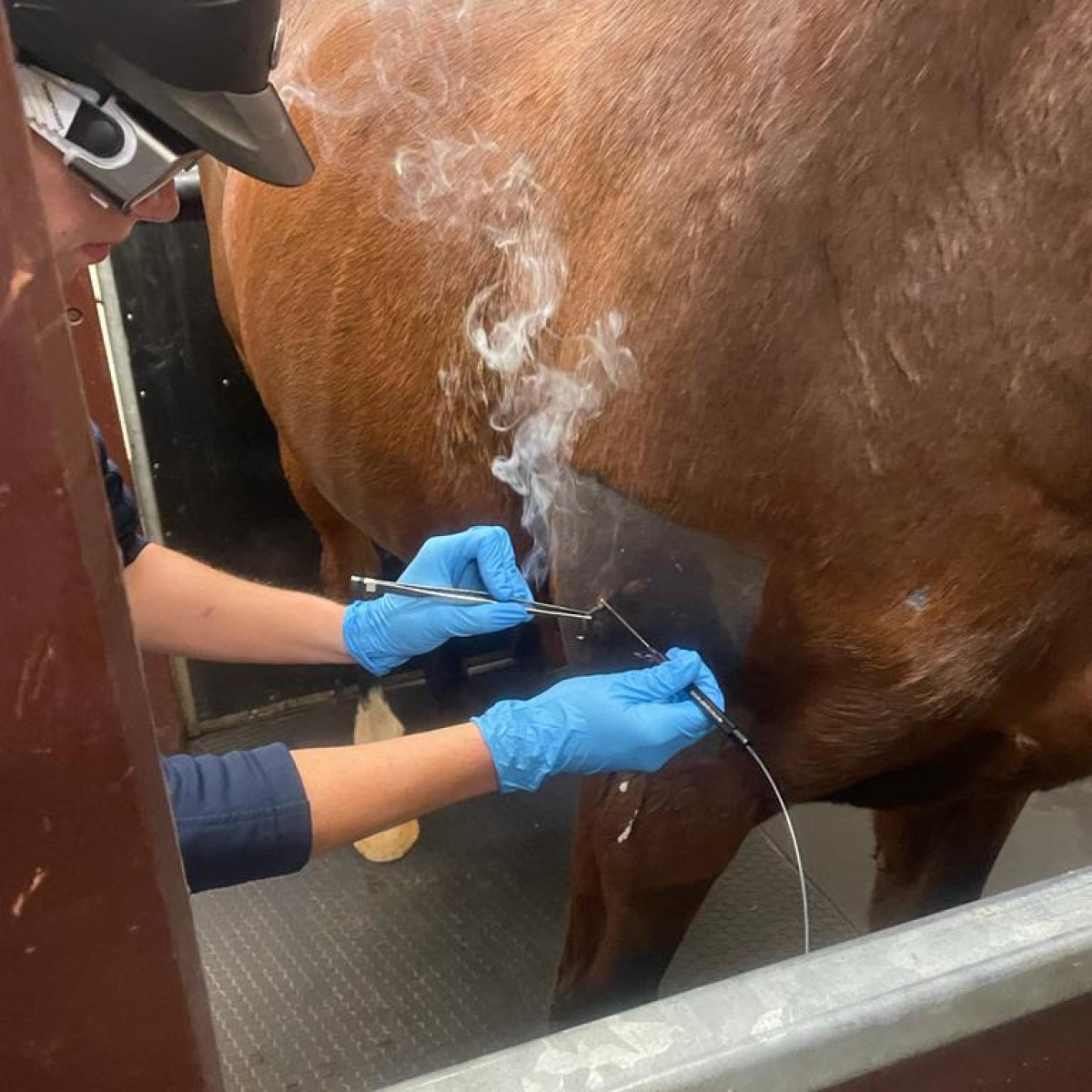Equine Therapy for Injury Healing: Exactly How Equines Assist Heal Emotional Wounds
Equine Therapy for Injury Healing: Exactly How Equines Assist Heal Emotional Wounds
Blog Article
Examining the Effectiveness of Laser Therapy in Horse Treatment for Injury Rehab
The assessment of laser treatment's performance in equine injury rehabilitation depends upon multiple elements, consisting of recovery time, pain reduction, and cells regeneration. Scientific researches suggest noteworthy improvements in conditions like tendonitis and osteoarthritis, associated to boosted cellular function and elevated ATP manufacturing. Vets frequently observe exceptional results with laser therapy compared to standard approaches, positioning it as a critical element in equine care. Nevertheless, the need for continuous monitoring and personalized treatment plans can not be overstated. What particular scientific proof sustains these claims, and exactly how do vets carry out these methods in technique?
Comprehending Laser Therapy
Laser therapy has actually come to be a crucial device in veterinary medicine, particularly in the therapy of equine conditions. Understood for its non-invasive nature and effectiveness, laser treatment involves the application of particular wavelengths of light to promote cells fixing and lower swelling. This therapeutic modality is significantly preferred for its capability to accelerate the recovery process in horses dealing with a selection of bone and joint injuries and chronic problems.
The key system behind laser therapy is its capability to boost cellular features. When laser light penetrates the skin, it is taken in by mitochondria, the giant of cells, which causes increased production of adenosine triphosphate (ATP) This biochemical power boost promotes cellular repair service and regrowth. Furthermore, laser treatment advertises vasodilation, enhancing blood circulation and oxygen delivery to damaged cells, hence speeding up recovery.
In equine medication, laser treatment is particularly useful for problems such as tendonitis, osteo arthritis, and wound healing. The method is lauded for its pain-relieving residential properties, allowing horses to restore wheelchair and feature extra rapidly. Veterinarians also appreciate its marginal negative effects contrasted to various other treatment modalities, making it a reliable and safe choice for equine care.

Just How Laser Treatment Functions

Upon absorption, these photons trigger a collection of biochemical adjustments, improving mitochondrial function and causing increased adenosine triphosphate (ATP) manufacturing. This rise in ATP accelerates mobile metabolism, promoting cells repair work and regrowth. Additionally, laser therapy regulates inflammatory responses by impacting cytokine degrees and decreasing oxidative stress and anxiety, consequently easing discomfort and swelling.
An additional considerable aspect of laser treatment is its role in boosting microcirculation. The therapy advertises vasodilation, enhancing blood circulation and oxygen shipment to broken tissues (Equine Therapy). This helps with the elimination of mobile debris and supports the proliferation of fibroblasts and collagen synthesis, vital for wound recovery
Clinical Proof
The efficacy of laser treatment in equine treatment has actually been validated via different clinical research studies, showcasing its healing prospective throughout a series of problems. Several get redirected here controlled tests and observational research studies have documented considerable renovations in tissue repair service, pain reduction, and total rehabilitation timelines. For instance, a research conducted by Turner et al. (2012) demonstrated that steeds treated with low-level laser therapy (LLLT) for tendon injuries showed sped up recovery contrasted to those obtaining traditional treatments. The research highlighted a significant reduction in inflammation and boosted collagen development.
Similarly, research by Johnson and colleagues (2015) concentrated on equine muscular tissue injuries, disclosing that laser therapy dramatically quickened muscular tissue fiber regrowth and minimized muscular tissue tightness. These searchings for were supported by histological evaluations showing improved muscle mass cells company. Moreover, clinical assessments have revealed that laser treatment can minimize chronic conditions such as osteo arthritis. A study by Smith et al. (2018) reported that steeds with osteoarthritic joints experienced significant pain alleviation and boosted variety of activity complying with a program of laser treatment sessions.
Vet Insights

Vets additionally value the flexibility of laser therapy. It can be utilized for a large array of problems, from surface injuries to much deeper bone and joint injuries. Dr. Emily Brown highlights its energy in treating conditions like tendonitis and osteoarthritis, where traditional therapies usually fall brief. She aims out that laser treatment can be customized to the details demands of each equine, making sure optimum end results.
In addition, vets value the capability to integrate laser therapy with various other therapy modalities. This multimodal method can enhance general treatment efficacy, supplying a thorough remedy for equine rehab. Such endorsements from skilled specialists highlight the expanding approval and application of laser therapy in equine medication.
Practical Factors To Consider
A key aspect of implementing laser treatment in equine therapy entails comprehending the useful factors to consider that guarantee its efficiency and safety and security. Firstly, it is important to select the proper laser device, as numerous types vary in wavelength, power, and penetration deepness. Equine Therapy. Vets should be fluent in these specifications to customize treatment methods effectively per injury type
Additionally, the frequency and duration of laser treatment sessions need cautious preparation to make best use of healing benefits while minimizing any type of potential unfavorable results. Constant tracking of the steed's response hop over to here to treatment can assist essential adjustments in the treatment regimen. Establishing a risk-free and regulated setting during treatments is likewise necessary to stop unintended exposure to laser discharges, which might damage both the steed and the handler.
Training and qualification of workers carrying out laser therapy are critical to guarantee appropriate method and to maintain safety and security criteria. Additionally, maintaining accurate records of each session, including laser settings and observed outcomes, is important for examining the general performance of the therapy and for making data-driven choices.
Final Thought
Laser treatment has arised as an effective method in equine injury rehab, providing substantial advantages in recovery time, discomfort relief, and cells recovery. For optimal outcomes, constant monitoring and customized treatment methods stay important in leveraging the full possibility of laser treatment in equine treatment.
Report this page